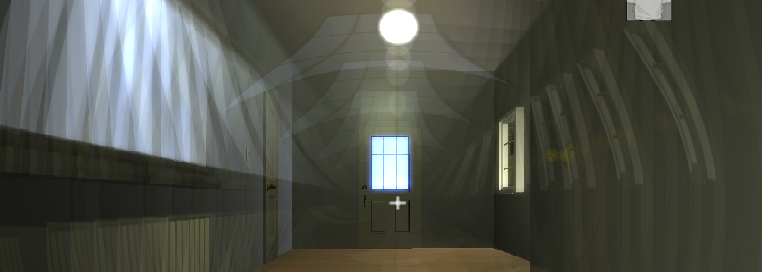

Can we or should we virtually simulate Autism?
source link: https://uxdesign.cc/can-we-or-should-we-virtually-simulate-autism-a534e937141e
Go to the source link to view the article. You can view the picture content, updated content and better typesetting reading experience. If the link is broken, please click the button below to view the snapshot at that time.
Can we or should we virtually simulate Autism?

I sat back to trying to imagine myself being a person on the Autistic spectrum, “What would I need? What could help me on a daily basis?”. It was then I realised that inspite of having three summers of experience working with people on the Autistic spectrum, family members on the spectrum and too much of an active imagination for my own good at times, this was an extremely difficult task. If I had training and experience yet still struggled, how ever could it be expected of members of the public or even new trainees?
There exists an empathy gap that makes understanding different perspectives challenging. Thus, for my thesis, inspite of being told I would need an entire game development team. I decided to build an Autism Simulation 3D game to help me better empathise so that I could better work out what products to build to help. It took make months of co-creation, research and learning about the neuroscience of autism so that I could cognitively model the effects.
Goals
The simulation itself takes place in a home environment and the user’s goal is to complete ‘missions’ whilst navigating obstacles and hazards. The strategies that the user could employ were never hard-coded into the system and it was left for users to work out themselves within the restrictions and bounds imposed. During evaluations participants tended to do three things: run through the simulation quickly until overloads occurred; identify hazards such as lights and turn them off; or finally, move around with the camera (the users “eyes”) steered away from hazards such as lights so as to not be affected.
It was interesting that participants were spontaneously deriving strategies themselves that people with autism had described and clarified.
After evaluations I had the opportunity to discuss the simulator with participants, during which one participant asked “Does this mean I should offer them a quiet room when they come to meet?”. There were more questions of similar nature and it was great to see people thinking of applications of their new knowledge gained from navigating the simulation environment to real life.
The point of the simulation is not to create a picture of what it is like to have autism — this is an impossible task, as it would be for any such category. Each individual is different and complex. Instead we aimed to create a fun learning environment which can raise awareness of sensory differences and encourage thinking about how a person with autism might adjust to deal with these. If playing a 15 minute simulation can impart just one tiny piece of the compassion and understanding I acquired over these last two years of development whilst alleviating some of the frustrations that arise from lack of understand at times, then really technology can have no greater success.
Video of Simulator
Tom, an autistic advocate who is autistic himself then created a video and narrated his experience! He’s great to watch and his commentary is incredibly insightful
Tom playing autism simulator and commentatingWhat did I learn?
I have learnt more about Autism than ever imagined and acquired other unexpected benefits; I feel much closer to my family. I became more patient, more aware, more able to adjust to their needs and more confident within myself and my interactions with them. It was one thing to read about autism and sensory overloads, I’d heard it all before over the years, but once I started creating a visual picture described to me by autistic people, I was taken aback.
There was a difference between knowing the facts and understanding what they mean for an individual to experience them, a difference between “knowing the path and walking the path” (in the great words of Morpheus from the Matrix).
Everything I’d read over the years clicked into place. I was met with new unprecedented feelings of respect and admiration and humbled by how little I had really understood.
Recommend
About Joyk
Aggregate valuable and interesting links.
Joyk means Joy of geeK